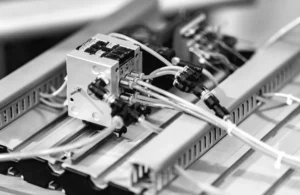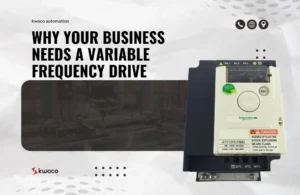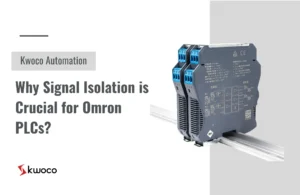10 Common Mitsubishi Servo Alarm Codes and Solutions: Troubleshooting Made Easy!
- kwoco-plc.com
- September 28, 2024
- 7:43 pm
In industrial automation, servo drives are critical, and Mitsubishi servos are among the best. As an experienced Kwoco engineer, I frequently encounter various servo alarm codes and assist clients in troubleshooting.
Here, I’ll share common Mitsubishi servo alarm codes and their solutions to help you quickly locate and fix issues.
Table of Contents
1. AL16.3 – Encoder Error
This alarm usually indicates encoder issues. Here’s what to check:
- Ensure the encoder is functioning correctly.
- Inspect the encoder cable and connectors for damage or looseness.
- If caused by a 2/4 wire setting issue, check cable length and set PC22=1 if needed.
Summary: Encoder faults are common; a thorough check of connections and settings often resolves the issue.
2. AL10.1 – Undervoltage Alarm
AL10.1 indicates low power supply voltage. Causes and solutions include:
- Check if the voltage is sufficient; adjust if below the rated value.
- Ensure there are no power interruptions longer than 60ms.
- Upgrade the power source if capacity is too low.
- Avoid reconnecting power within 5 seconds after disconnection.
Summary: Maintaining stable power and adequate capacity helps prevent AL10.1 alarms.
3. AL12 – Memory Error
AL12 signals internal memory interference or damage. Restoring the servo drive to factory settings usually resolves this.
4. AL.E6 – Emergency Stop
Possible causes:
- The control circuit’s 24V power is not connected.
- The EMG and SG terminals in CN1 are not connected.
Summary: Always ensure the emergency stop signals are correctly connected to avoid false alarms.
5. AL.37 – Parameter Error
AL.37 is often due to incorrect settings or external interference. Resetting parameters to factory settings typically fixes this.
6. AL.16 – Encoder Fault
Causes include parameter issues, cable faults, or encoder damage. Try replacing the encoder cable or encoder. Persistent problems may indicate the need to replace the servo drive’s base plate.
7. AL.20 – Encoder Cable Issue
AL.20 is often caused by disconnected or loose encoder cables. Check all connections and replace faulty cables. In the MR-J3 series, ensure the drive CPU ground wire is intact.
Summary: Regular inspection and maintenance of encoder cables can reduce these alarms.
8. AL.30 – Regenerative Brake Fault
This alarm is usually related to the braking circuit. Recommendations:
- If the alarm appears on power-up, internal braking circuit components may be damaged.
- During operation, check the braking circuit connections and consider adding external brake resistors.
9. AL.50/AL.51 – Overload Alarm
Check if the servo output U, V, and W phases are connected correctly. Persistent high loads may require parameter adjustments or mechanical load checks.
Summary: Monitoring servo load status helps prevent overload damage.
Power your projects with brand-new, original Omron, Mitsubishi, Delta Servo – in stock, ready now!
10. AL.E9 – Main Circuit Disconnection
This alarm generally results from an unconnected main circuit power source or a detection circuit fault. Inspect the main power connections; if correct, consider replacing the servo drive or relevant parts.
Summary: Regularly inspect the main circuit power connections to minimize AL.E9 occurrences.
FAQ: Common Questions About Mitsubishi Servo Alarms
1. What is the alarm 32 on a Mitsubishi servo?
Alarm 32 usually refers to an overcurrent condition, where the current flowing through the servo amplifier exceeds the permissible limit. This can be caused by issues such as a short circuit, high mechanical load, or internal faults in the drive system. To resolve this, you should check the motor and drive connections, inspect for short circuits, and verify that the load is within specified limits
2. What causes a servo alarm?
Servo alarms can be triggered by factors such as electrical faults, overloading, parameter errors, encoder issues, or mechanical faults. Regular maintenance and proper setup can prevent many of these alarms.
3. What is the code E9 on a Mitsubishi drive alarm?
Alarm E9 indicates a “Main Circuit Off” warning, which occurs when the servo-on command is input while the main circuit power supply is off. Common causes include the main power not being properly connected to terminals L1, L2, and L3, or the corresponding single-phase connections L11 and L21. Ensuring proper wiring of the main power connections usually resolves this fault
4. What are the symptoms of a bad servo?
Symptoms of a failing servo include unusual noises, erratic movements, frequent alarms, overheating, and inconsistent performance. These symptoms often signal issues like motor wear, encoder faults, or electrical failures.
Conclusion
By understanding these common alarm codes and troubleshooting methods, you can effectively manage Mitsubishi servo drive issues. Always be thorough in your checks and responsive in your fixes to keep your servo systems running smoothly! For further technical support, visit our website at www.kwoco-plc.com or contact me at [[email protected]].
Contact Us
Just fill out your name, email address, and a brief description of your inquiry in this form. We will contact you within 24 hours.

Why Your PLC Needs a Separate Power Supply
Why Your PLC Needs a Separate Power Supply Have you ever wondered why PLC systems often require a separate power

Why Your Business Needs a Variable Frequency Drive
Why Your Business Needs a Variable Frequency Drive When managing industrial operations, optimizing energy efficiency while maintaining performance is crucial.

Why Signal Isolation is Crucial for Omron PLCs?
Why Signal Isolation is Crucial for Omron PLCs? In the world of industrial automation, signal interference is a silent killer.
